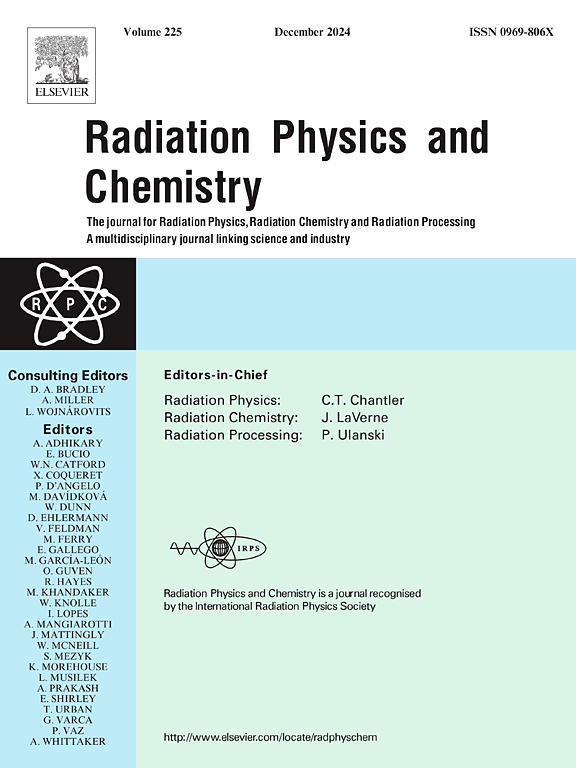A structural study of MoSe2 nanoflakes prepared via liquid phase exfoliation: X ray absorption and photoemission study
IF 2.8
3区 物理与天体物理
Q3 CHEMISTRY, PHYSICAL
引用次数: 0
Abstract
Two-dimensional materials, particularly transition metal dichalcogenides (TMDs), have garnered significant interest due to their tunable structural and chemical properties when exfoliated to lower dimensions. Exfoliated TMDs have been widely applied across various fields that support the United Nations Sustainable Development Goals (UN-SDGs), especially SDG 7 (Affordable and Clean Energy) and SDG 13 (Climate Action), through their use in energy storage, electrocatalysis, and water treatment membranes. Among TMDs, molybdenum diselenide (MoSe2) has received comparatively less attention; however, it exhibits outstanding properties similar to those of MoS2. This study proposes a greener synthesis route for MoSe2 via liquid-phase exfoliation using an alcohol-based solvent mixture a scalable and cost-effective alternative to conventional methods. Unlike traditional approaches that rely on toxic solvents such as N-methyl-2-pyrrolidone (NMP), our method employs a more environmentally friendly ethanol-water mixture. This eco-conscious process reduces environmental impact while preserving material quality. Comprehensive characterization techniques, including X-ray Absorption Spectroscopy (XAS) and X-ray Photoelectron Spectroscopy (XPS), were employed to investigate the crystallinity, morphology, and composition of the exfoliated MoSe2. The results highlight the importance of sustainable solvent systems in optimizing exfoliation efficiency and advancing green chemistry principles. By integrating environmentally responsible synthesis with in-depth material analysis, this work contributes to the sustainable development of 2D material production.

液相剥离法制备MoSe2纳米片的结构研究:X射线吸收和光发射研究
二维材料,特别是过渡金属二硫族化合物(TMDs),由于其可调的结构和化学性质,当剥离到较低的维度时,已经引起了极大的兴趣。去角质tmd已广泛应用于支持联合国可持续发展目标(un -SDG)的各个领域,特别是可持续发展目标7(负担得起的清洁能源)和可持续发展目标13(气候行动),通过将其用于储能、电催化和水处理膜。在tmd中,二硒化钼(MoSe2)受到的关注相对较少;然而,它表现出与二硫化钼相似的优异性能。本研究提出了一种更环保的合成MoSe2的途径,即使用醇基溶剂混合物进行液相剥离,这是一种可扩展且具有成本效益的替代传统方法。与传统方法依赖于有毒溶剂(如n -甲基-2-吡咯烷酮(NMP))不同,我们的方法采用了更环保的乙醇-水混合物。这种具有生态意识的过程在保持材料质量的同时减少了对环境的影响。利用x射线吸收光谱(XAS)和x射线光电子能谱(XPS)等综合表征技术对剥离后的MoSe2的结晶度、形貌和组成进行了研究。研究结果强调了可持续溶剂系统在优化剥离效率和推进绿色化学原则方面的重要性。通过将对环境负责的合成与深入的材料分析相结合,这项工作有助于二维材料生产的可持续发展。
本文章由计算机程序翻译,如有差异,请以英文原文为准。
求助全文
约1分钟内获得全文
求助全文
来源期刊

Radiation Physics and Chemistry
化学-核科学技术
CiteScore
5.60
自引率
17.20%
发文量
574
审稿时长
12 weeks
期刊介绍:
Radiation Physics and Chemistry is a multidisciplinary journal that provides a medium for publication of substantial and original papers, reviews, and short communications which focus on research and developments involving ionizing radiation in radiation physics, radiation chemistry and radiation processing.
The journal aims to publish papers with significance to an international audience, containing substantial novelty and scientific impact. The Editors reserve the rights to reject, with or without external review, papers that do not meet these criteria. This could include papers that are very similar to previous publications, only with changed target substrates, employed materials, analyzed sites and experimental methods, report results without presenting new insights and/or hypothesis testing, or do not focus on the radiation effects.
 求助内容:
求助内容: 应助结果提醒方式:
应助结果提醒方式:


